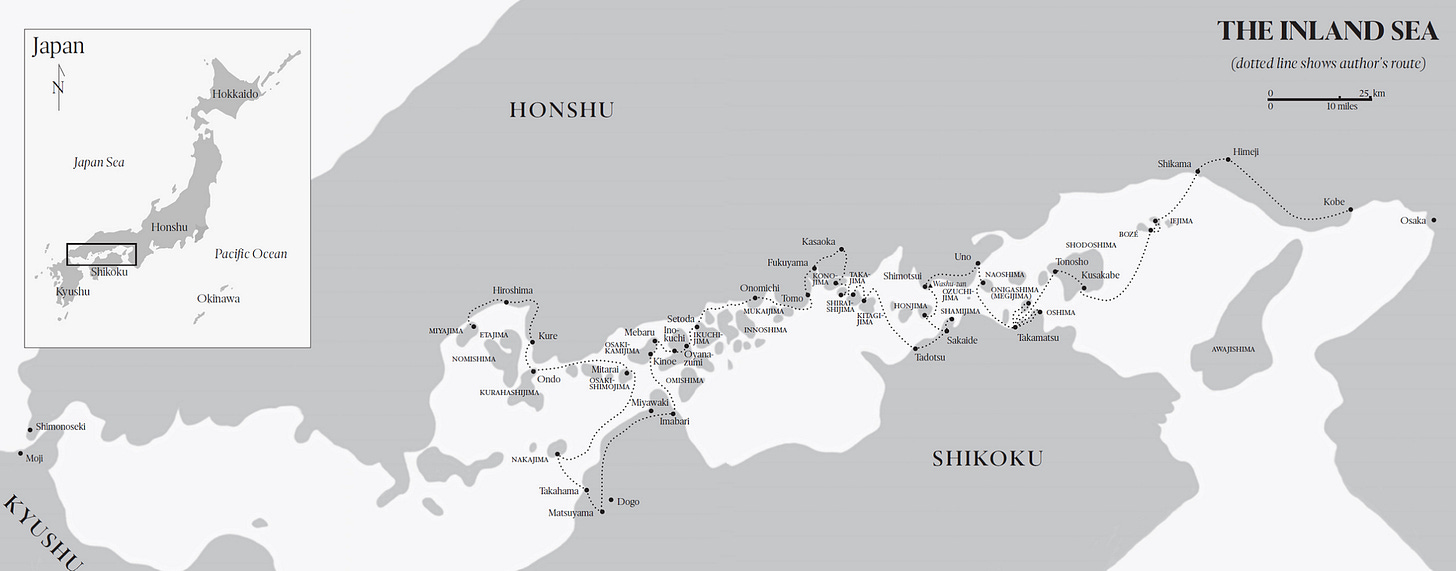The pandemic has made travel difficult in recent years. In the case of Japan, impossible, as it elected to close its borders. Fortunately, reopening seems to be right around the corner. While we sit at home waiting for restrictions to ease, what recourse do we have but to travel vicariously through words and images?
Donald Richie’s The Inland Sea is perhaps unrivaled as a travel aid for the imagination. Richie’s easy and evocative prose have made the book a classic, not only among travel literature of Japan, but among modern travelogues in general. Originally published in 1971, Richie transports readers to the titular body of water, its islands, and its surrounding coast. But his concern is not primarily the sea itself or its environs (although its beauty is an essential element). No, Richie’s talent is for people: These are the people of Old Japan.
But first, let’s get our bearings. The Seto Inland Sea, or Seto Naikai, is a waterway between three of Japan’s major islands, Honshu, Shikoku, and Kyushu. It both separates and connects these islands, serving as the primary mode of transport between them until the advent of the railroad and highway systems. All this is to say, the region is a crossroads, thus, as Richie puts it, “it has always been something to get across rather than merely to enjoy. Consequently, to this day, though widely known, it is little understood.”
This is, in part, what draws Richie to it.
He is also drawn away from the ceaseless upheaval of development, as embodied in the modern city par excellence, Tokyo. So is this just a story of escape from the human world to the natural? Doubtless, Richie exchanges steel-and-glass towers and the “froth of novelty” for rolling coastal hills and the wide, placid sea; the vertical for the horizontal; the awe-inspiring products of concentrated human activity for a beauty which he describes as “domesticated.” That is not to say that there aren’t moments of the sublime to be found in the Inland Sea. There are: One need only look for the Shinto monuments that commemorate them.
But Richie’s genius is for people. He sees in the residents of the Seto Naikai, in sharpest contrast to urbanite Japanese, “a people for whom becoming means little and being everything.” Never condescending, nor taking on the air of an ethnographer, Richie offers an understanding of people only possible through genuine affection. Still, we are not the same, he tells us, “Here is the last of old Japan.” Unlike the cosmopolitan city, old Japan is not littered with the cultural signifiers of the West. It evinces the beauty of an earlier era, inseparable from place.
Richie made Japan his home and died there in 2013. He witnessed firsthand the changes Japan underwent in the latter half of the twentieth century. So he leaves us with this injunction, “part of [the Inland Sea’s] beauty is that it is passing, already the modern mainland is reaching out.” This is a dire prediction for us armchair travelers. But worrying won’t get us very far. We can only live as the Seto Islanders do, in the present.
You can learn more about Donald Richie and The Inland Sea on our website.






